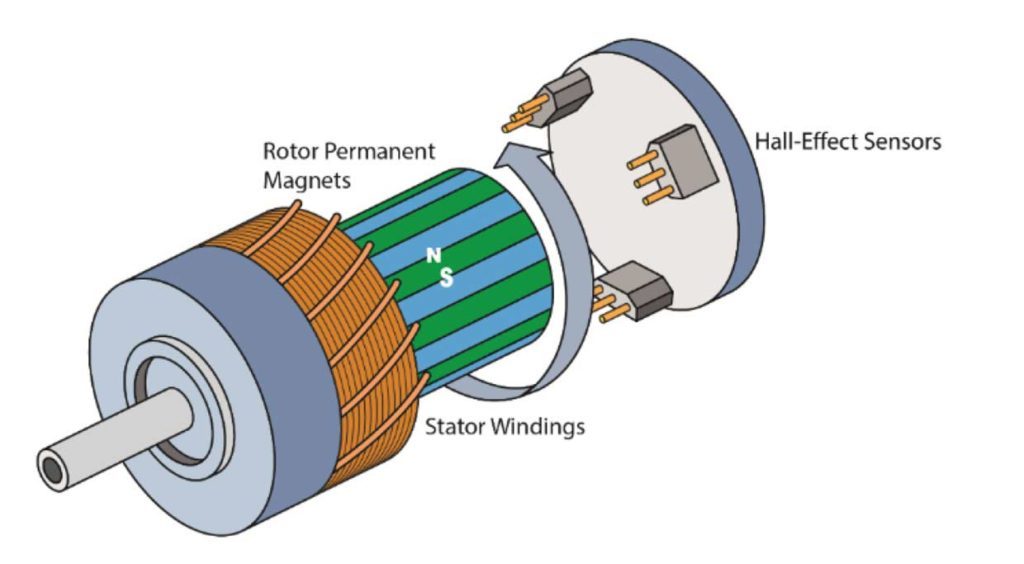A brushless DC motor consists of a rotor in form of a permanent magnet and stator in form of polyphase armature windings. It differs from conventional dc motor in such that it doesn’t contains brushes and the commutation is done using electrically, using a electronic drive to feed the stator windings.

4 Pole 2 Phase Motor Operation
The brushless DC motor is driven by an electronic drive which switches the supply voltage between the stator windings as the rotor turns. The rotor position is monitored by the transducer (optical or magnetic) which supplies information to the electronic controller and based on this position, the stator winding to be energized is determined. This electronic drive consists of transistors (2 for each phase) which are operated via a microprocessor.
7 Advantages of Brushless DC Motors
Better speed versus torque characteristics
High dynamic response
High efficiency
Long operating life due to a lack of electrical and friction losses
Noiseless operation
Higher speed ranges
Applications:
The cost of the Brushless DC Motor for sale has declined since its presentation, because of progressions in materials and design. This decrease in cost, coupled with the numerous focal points it has over the Brush DC Motor, makes the Brushless DC Motor a popular component in numerous distinctive applications. Applications that use the BLDC Motor include, yet are not constrained to:
Consumer electronics
Transport
Heating and ventilation
Industrial engineering
Model engineering
Principle of Working
The principles for the working of a BLDC motors are the same as for a brushed DC motor, i.e., the internal shaft position feedback. In case of a brushed DC motor, feedback is implemented using a mechanical commutator and brushes. Within BLDC motor, it is achieved using multiple feedback sensors. In BLDC motors we mostly use Hall-effect sensor, whenever rotor magnetic poles pass near the hall sensor, they generate a HIGH or LOW level signal, which can be used to determine the position of the shaft. If the direction of the magnetic field is reversed, the voltage developed will reverse too.